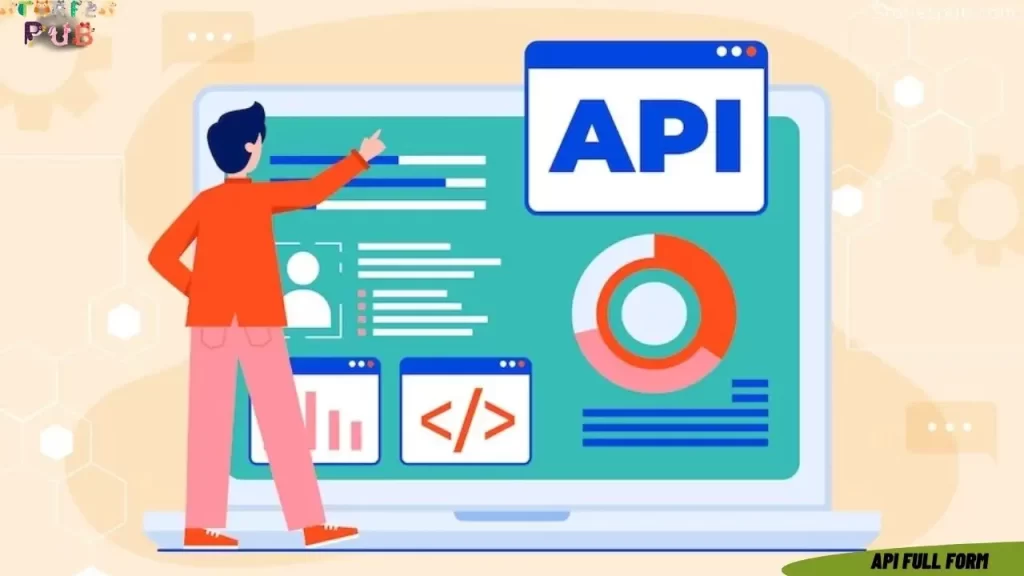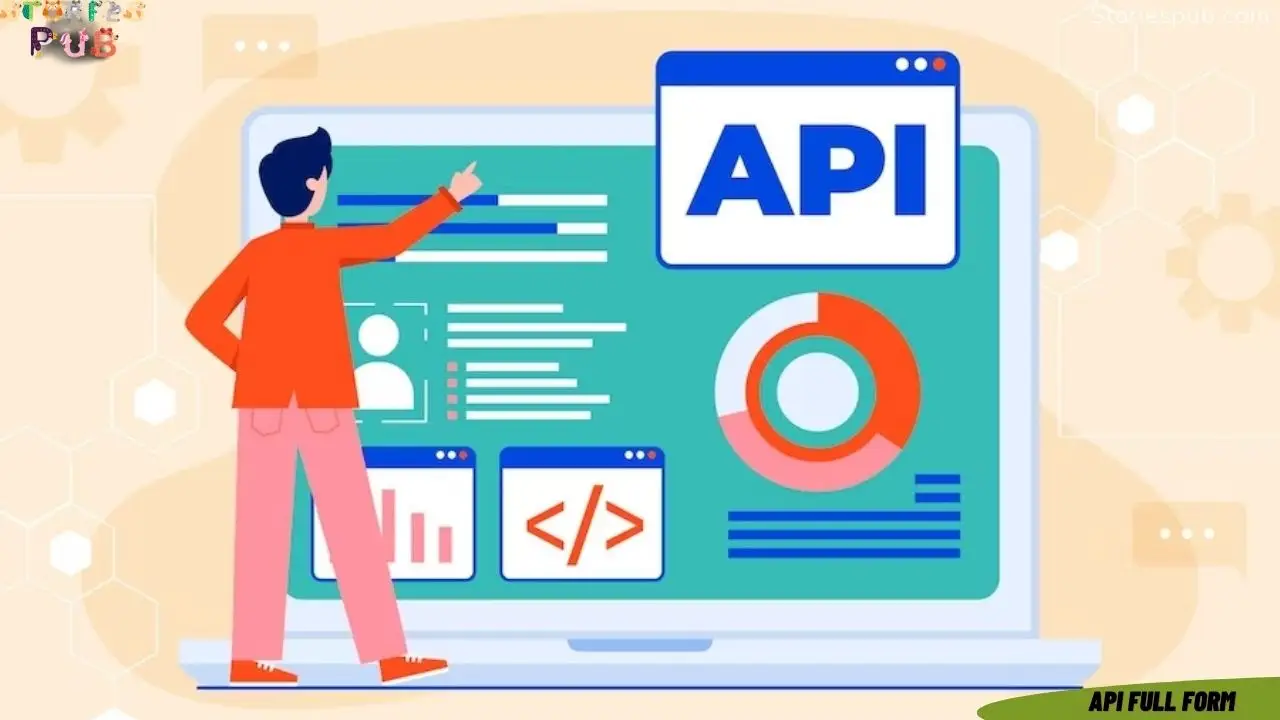API Full Form | Application programming interface

In today’s fast-paced world, software development is a vital aspect of many businesses and industries. To make software development more efficient and productive, developers use a tool called an Application Programming Interface, or API for short. APIs are essential in modern software development, as they provide a standardized way for different software components to interact with one another.
In this article, we will take a closer look at APIs, including what the term “API” stands for, what APIs are, why they are important, and how they are used. Whether you are a software developer, a business owner, or simply curious about technology, understanding APIs and their role in modern software development is crucial. So, let’s dive in and explore the world of APIs!
What is an API?
At its core, an API is a set of rules and protocols that allow different software applications to communicate with one another. An API provides a way for one software component to interact with another software component, without having to know the details of how that component is implemented. Essentially, an API acts as a “middleman” between different software systems, allowing them to exchange data and functionality in a standardized, structured way.
To give an example, let’s say you want to build a weather app that displays the current temperature in a user’s location. Instead of writing the code to collect temperature data yourself, you could use an API provided by a weather service that returns the current temperature for a given location. By using this API, you can leverage the pre-existing code and functionality provided by the weather service, rather than reinventing the wheel and writing the code from scratch.
In essence, an API provides a way to share functionality and data between different software applications, allowing developers to create more powerful, flexible, and interconnected systems.
Importance of APIs in modern software development
APIs have become increasingly important in modern software development for several reasons:
Facilitating integration and interoperability: With the proliferation of different software systems and services, it is more important than ever for these systems to be able to communicate and work together seamlessly. APIs provide a standardized way for different software components to interact with one another, making it easier to build complex and integrated systems.
Accelerating development: By providing pre-built functionality and services, APIs can help developers build applications more quickly and efficiently. Rather than spending time writing code from scratch, developers can leverage existing APIs to perform common tasks and access pre-built features.
Encouraging innovation: APIs enable developers to build upon the work of others, creating new and innovative applications by combining and reusing existing services and features. This allows for greater experimentation and creativity in software development.
Supporting multiple platforms: APIs are platform-agnostic, meaning they can be used across different operating systems, devices, and programming languages. This makes it easier to build applications that can be used by a wide variety of users and devices.
Overall, APIs have become an essential tool for modern software development, enabling greater efficiency, interoperability, innovation, and flexibility.
What Does API Stand For?
API stands for “Application Programming Interface.” The term refers to a set of protocols, routines, and tools that enable different software components to interact with one another. An API defines how software components should communicate, specifying the types of data that can be exchanged and the methods for exchanging that data.
In essence, an API is a contract between different software components, specifying the terms and conditions under which they can interact. By providing a standardized way for different software systems to communicate and share data, APIs enable greater interoperability and flexibility in software development.
Expansion of the acronym “API”
API is known as the “Application Programming Interface.” Let’s break down each word in the acronym to better understand its meaning:
Application: Refers to a software program or set of programs designed to perform a specific function or task.
Programming: Refers to the act of writing code that can be executed by a computer to perform a particular task or set of tasks.
Interface: Refers to the point of interaction between two different entities. In the context of APIs, an interface refers to the set of rules and protocols that govern how two different software systems interact with one another.
Taken together, the term “Application Programming Interface” refers to a set of rules and protocols that allow different software applications to communicate with one another in a standardized, structured way. By providing a way for software components to interact with one another without knowing the details of how they are implemented, APIs enable greater efficiency, flexibility, and innovation in modern software development.
How APIs work
There are several different types of APIs, each with its characteristics and use cases. Here are three of the most common types:
Web APIs: Also known as REST APIs, these APIs use HTTP requests to communicate with web servers and exchange data. Web APIs is often used for retrieving or manipulating data from a remote source, such as a database or web service. Some common examples of web APIs include the Google Maps API, the Twitter API, and the Facebook API.
Local APIs: These APIs are designed to be used within a single application or operating system. Local APIs are often used for performing system-level tasks, such as accessing hardware components, managing files, or interacting with other applications on the same device. Some common examples of local APIs include the Windows API and the Android API.
Programmatic APIs: Also known as library APIs or language-specific APIs, these APIs provide a set of pre-built functions and routines that can be used within a specific programming language or development environment. Programmatic APIs are often used for performing common tasks, such as string manipulation, database access, or file I/O. Some common examples of programmatic APIs include the Java API, the .NET Framework API, and the Ruby API.
Regardless of the type of API, the basic principles of how they work are similar. When an application wants to access the functionality provided by an API, it sends a request using a standardized format and protocol. The API then processes the request, performs any necessary tasks, and returns a response containing the requested data or functionality. This process allows different software components to interact with one another in a structured and standardized way, making it easier to build complex, integrated systems.
How Are APIs Developed (technologies behind API)
Developing an API can involve several different technologies and tools. Here are some of the key components that are typically involved in API development:
Programming languages: APIs can be written in a wide variety of programming languages, depending on the needs of the developer and the requirements of the system. Some common languages used for API development include Java, Python, Ruby, and JavaScript.
Web servers: For web-based APIs, a web server is typically required to handle incoming requests and route them to the appropriate API endpoints. Popular web servers for API development include Apache, NGINX, and IIS.
API frameworks: To simplify the process of API development, many developers use specialized frameworks that provide pre-built functionality and tools for building APIs. Some popular API frameworks include Django REST Framework, Flask, and Express.
API documentation tools: To ensure that developers can easily understand and use an API, it’s important to provide clear and comprehensive documentation. There are several tools available for generating API documentation, including Swagger, Postman, and API Blueprint.
API testing tools: To ensure that an API is functioning correctly and providing the expected results, it’s important to perform thorough testing. There are several tools available for testing APIs, including Postman, SoapUI, and JMeter.
API management platforms: As APIs become more complex and widely used, it can be useful to have a centralized platform for managing and monitoring them. API management platforms provide features such as access control, usage analytics, and performance monitoring. Some popular API management platforms include Apigee, Kong, and Tyk.
Overall, developing an API involves a combination of software development skills, best practices, and specialized tools and technologies. By following a structured and consistent approach to API development, developers can create powerful and flexible software systems that can be easily integrated with other applications and services.
Conclusion
API is a critical component of modern software development, enabling different applications and services to communicate and exchange data in a structured and standardized way. APIs can take many different forms, from web APIs to programmatic APIs, and can be developed using a wide range of technologies and tools.
As software systems become more complex and interconnected, the importance of APIs is only likely to increase. Whether you’re building a mobile app, a web application, or a complex enterprise system, understanding APIs and how they work is essential for creating robust and scalable software solutions.
Hey kids, how much did you like API Full Form | Application programming interface? Please share your view in the comment box. Also, please share this story with your friends on social media so they can also enjoy it, and for more such Full form, please bookmark storiespub.com.
Suggested Article –





